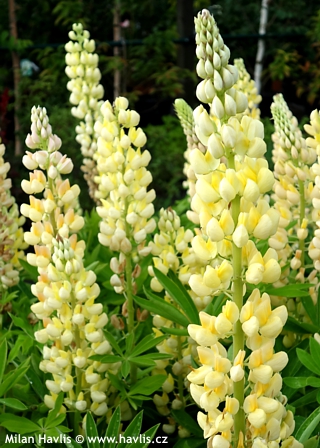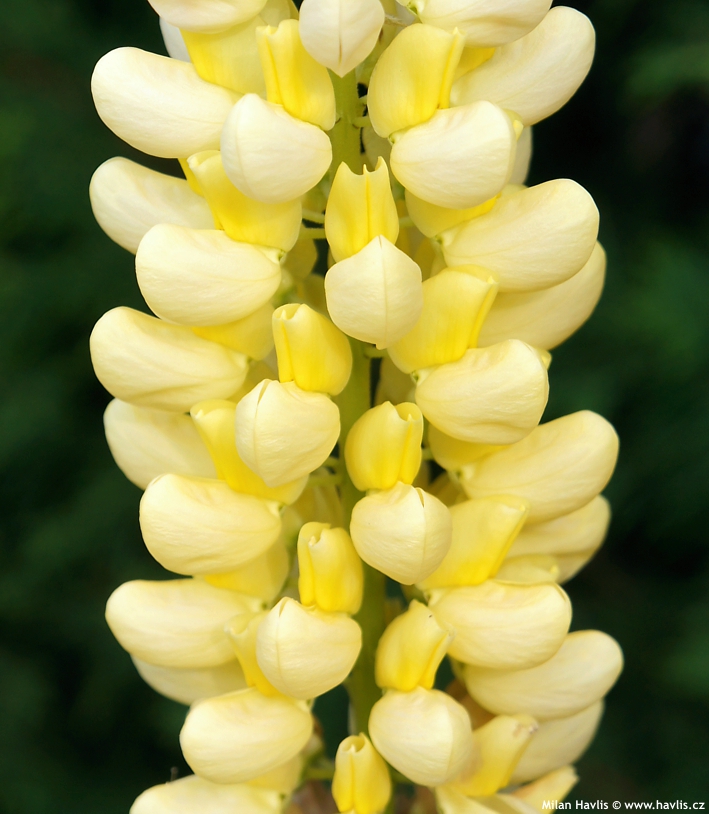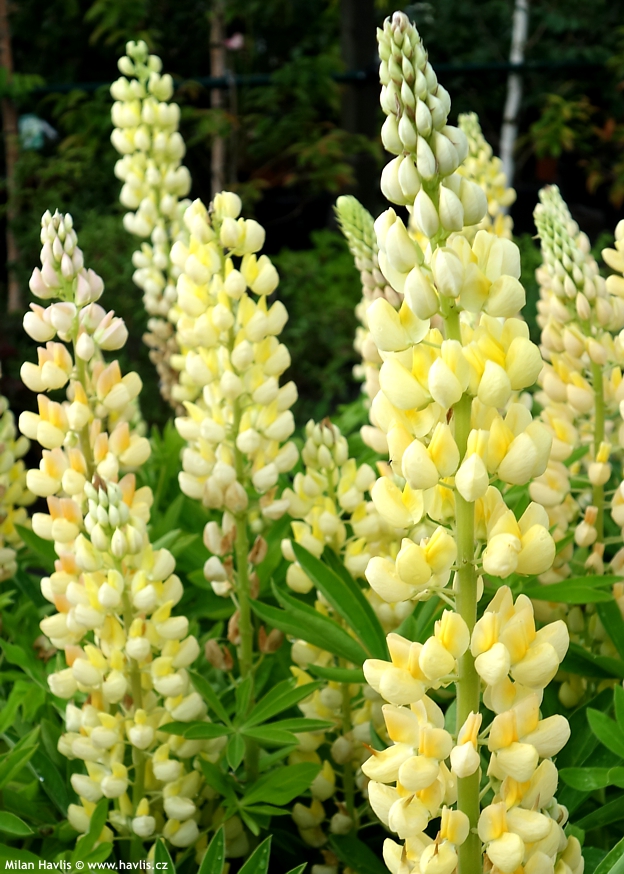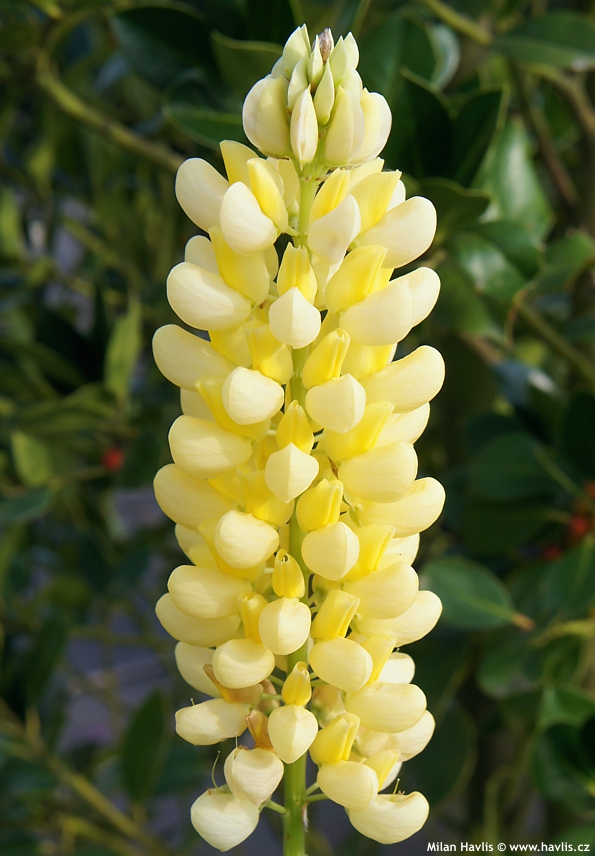Lupinus 'CHANDELIER' Lupines


Lupinus
Lupines are the inevitable item of English gardens as well as Czech woodlands. They come from North America and naturally grow in sunny locations of moist woodland edges and rocky slopes where their roots establish well in crevices that never lack moisture but are well draining. Deciduous, palmate leaves are deep green and very attractive as they are finely divided.
This lupine has a perfect name – Chandelier. Its flowers shine from a distance like a lit up crystal chandelier. They are a combination of vanilla yellow and lemon yellow, formed in long spikes atop about 80 cm tall stems. Blooming begins in July and continues in several flushes on shorter stems until September. In order to secure profuse flowering as well as quality of the flowers we recommend using a fertilizer high in phosphorus 2 or 3 times during the flowering season. The leaves may be prone to powdery mildew if the plant dries out.
Lupines like free draining soil that retains moisture and is preferably acidic. They can fix nitrogen from the atmosphere and distribute it through their roots. This is why they are often used as pioneer plants in poor soils. Beware of slugs which can devastate both your seedlings as well as old clumps. The flowering spikes are sturdy but fleshy and should be planted where they can be protected from the extreme wind blasts that could bend or break them. Unlike sweet-lupines whose seeds are edible, ornamental lupines (bitter-lupines) can be harmful if eaten. These plants are short-lived and should be dug out in the spring every 3-5 years, woody parts removed, and new plants put pack to encourage fresh growth. Hardy to about -34°C.
Last update 26-09-2013






































